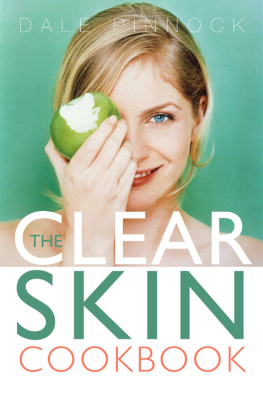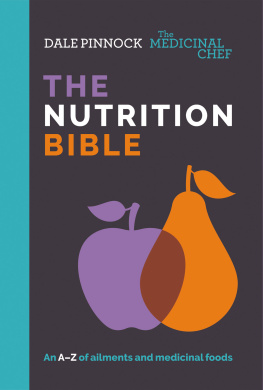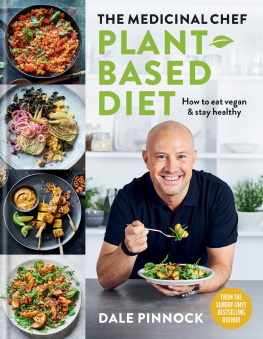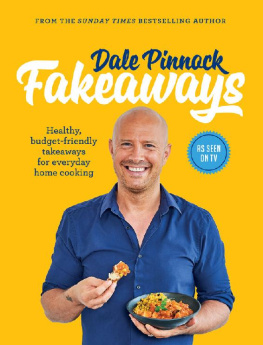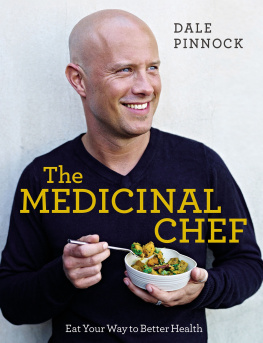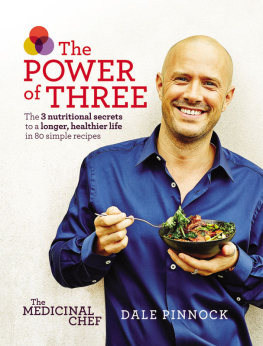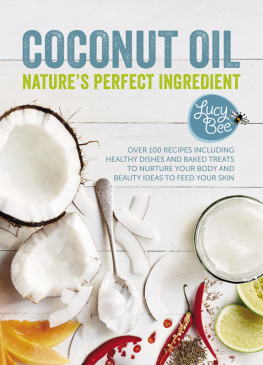Contents
PART 1: Techniques and Ingredients
PART 2: The Recipes In recent years it has become blatantly obvious that the food we eat affects our health in a massive way. We are seeing first-hand the extent to which bad diet can influence the health of nations. Globally we are seeing levels of degenerative disease and mortality rates that are just staggering. These arent deaths from things like infectious disease, war or genocide these are deaths in their hundreds of thousands from things that are for the most part completely avoidable. Type 2 diabetes, for example, affects 415 million people, and by 2040 it is believed that it will affect one person in ten: thats 642 million people. This isnt the congenital condition type 1 diabetes that we develop in childhood: this is a condition that comes from lifestyle.
Im not throwing around blame, but it is what it is. In the UK we have 160,000 deaths a year from cardiovascular disease. And as for cancer statistics, we all know where these are going: currently they state that one in three of us will be directly affected by cancer in some way during our lifetime, and those odds are getting worse. What we are seeing here are the terrible consequences of intervention in our diet: refined rubbish sold to us in the name of convenience. We are constantly reminded how time-poor we are (although if we really analyze our days, we may be surprised how much time we do have). We are being sold this processed rubbish under the guise and this is what I find incredibly sinister of a healthy option.
And we use cartoons and sporting heroes to sell it to our children. We get addicted to the high levels of salt, sugar and trans fats. Many food giants exploit our increased financial strain and churn out cheap processed produce, positioning themselves as heroes who are there to save us money and help us put good food on the table. The whole thing has gone horribly wrong and we seriously need to go back to basics. But what ARE these basics? Where do we start? Well, this book will help to give you some support there, and there are two little mantras that will tell you everything you need to know. Firstly: If it ran, it swam, or it grew then eat it!! Everything else, leave out.
This basically tells us to get back to whole ingredients that are found in their natural original state, as nature provides them. A brightly coloured box with an ingredients list as long as War and Peace and that sounds like the contents of a chemistry set is NOT a natural state. The second little mantra is even simpler: Real food does not contain ingredients. Real food IS ingredients.
So, why did I write this book? Of all the questions I get asked and of all the advice that people often want, the basics of where to start and how to start putting a healthy diet together are always at the top. I think almost all of us want to eat more healthily.
The problem is that we are constantly bombarded with all kinds of weird and wonderful information. New diets, fads and strange ingredients abound. Which is it this week: the Himalayan wonga wonga berry, or biodynamic grass-fed unicorn? To many people, eating healthily seems out of reach. It may be that we think its complicated, or expensive. We may just think it is plain boring or, like so many, we just dont have a clue where to start. Lets face it, it isnt really taught in our schools.
Sure, we may have cookery classes, we may learn about protein, fats, carbohydrates etc., but when do we ever get taught the basics of putting a good diet together? What should be included? What types of fats should I use for cooking? What cooking methods are the best? What on earth am I supposed to do with quinoa? Over the past few years I have looked around the book stores and have seen several celebrity chef How to Cook type books. Then it dawned on me: there really should be something like this about cooking healthily. So I decided to put one together, and here it is. The purpose of this book is really to be a guide for you to help you make sense of what healthy dishes look like, how they are composed, and what cooking methods you can use to create a healthy dish and to get the best out of your ingredients. It will give you some key information as to what is beneficial in certain ingredients. Ideas for side dishes, main courses, healthy salads, sweet treats: its all there.
There is a bit of everything. I dont necessarily want this book to be 100 per cent instructional. Dont see this as being your entire healthy repertoire. I want this to be inspiration for the way in which you cook for life. WHAT IS COVERED: COOKING TECHNIQUES I have dedicated a few chapters to some of the best cooking techniques for preparing healthy food and getting the best out of fresh ingredients. Here you will find wonderful stir-fries, recipes to make in your steamer, and hearty oven-baked dishes.
HEALTHY INGREDIENTS Other chapters focus on some of the staple ingredients that make up a healthy diet. Youll find sumptuous salads, gorgeous fish and seafood dishes, ideas for meat and poultry, and ways to bring whole grains to life. These chapters aim to show you not only what is good about these ingredients, but also the diverse ways in which these ingredients can be used. Adopting healthier cooking methods couldnt be simpler. For me, there are only really two rules you need to follow to make a huge difference. The first, and the one that is probably obvious by now, is to go easy on the deep frying.
This is mostly an exercise in reducing your intake of refined vegetable oils. For the most part, things are deep fried in the likes of sunflower oil. This is extremely high in something called omega-6 fatty acids (which will be covered later in the Good Fats section) which, when consumed in anything more than tiny quantities, can trigger inflammatory damage to areas like the cardiovascular system. These oils are also very prone to oxidative damage, so after one or two uses the oil becomes a soup of damaging free radicals. Certainly in commercial establishments, the oils used in fryers are not changed after each use. The second rule for healthier cooking is to avoid cooking your vegetables to death.
Who remembers Sunday lunches when the broccoli was almost transparent, and the greens started to turn grey because everything had been boiled for half the day? Not only does this create an utterly unpleasant meal, but boiling vegetables for too long destroys almost all of the important nutrients many of which are water soluble and heat sensitive. So, with the above in mind, you will see that healthier cooking really isnt restrictive at all, and you have a lot of methods left in your armoury to create a huge range of dishes. Lets take a quick overview. Roasting and baking make the preparation of healthy ingredients an absolute joy, in my opinion. It is a perfect method for combining all manner of flavours and textures, and turning simple healthy staples like root vegetables into some of the most comforting and sustaining food imaginable. This method of cooking is especially good for the winter months.


